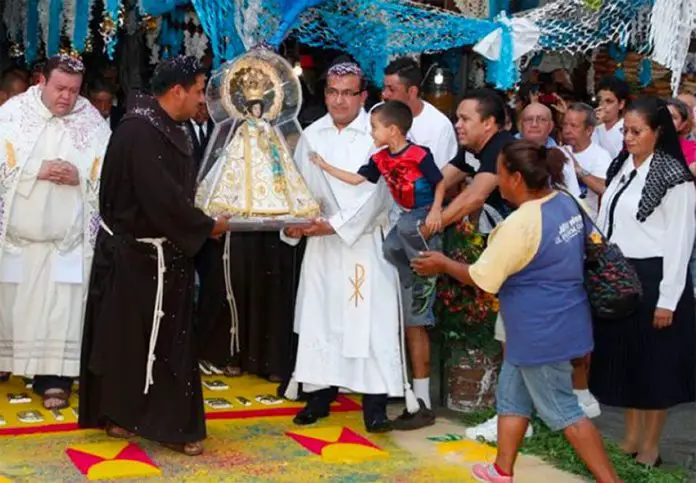The annual Jalisco pilgrimage in honor of the Virgin of Zapopan was added today to the UNESCO list of intangible cultural heritage.
Every year on October 12, more than two million Catholic pilgrims walk about nine kilometers from the Guadalajara Cathedral to the Basilica of Our Lady of Zapopan accompanied by a 34-centimeter figure of the Virgin of Zapopan, an event known as La Romería.
The virgin is believed to have saved the inhabitants of Jalisco from a series of epidemics and floods in the 17th century and soon after became the local patron against storms, the website Religion News Service reported.
“The annual celebration of La Romería on 12 October, honoring the image of the Virgin of Zapopan, is a tradition that dates back to 1734,” UNESCO said in a statement announcing the pilgrimage’s inclusion on its cultural heritage list.
“The day marks the final phase of the annual ritual cycle popularly known as ‘The Carrying of the Virgin’, which begins in May and encompasses many community and liturgical activities,” it continued.
More than 35,000 dancers belonging to a range of indigenous groups also participate in the pilgrimage, and music and fireworks add to the festive atmosphere that spreads over the city’s streets.
Zapopan Mayor Pablo Lemus told the news agency EFE earlier this week that he was confident that the pilgrimage would be included on the UNESCO list because all local residents as well as many other people across the country banded together to support the cause.
The process began three years ago when the municipal governments of Zapopan and Guadalajara and the state government wrote letters to UNESCO in support of the pilgrimage’s inclusion on the intangible cultural heritage list.
Federal authorities, including the National Institute of Anthropology and History (INAH) and the Secretariat of Foreign Affairs (SRE), also supported the inclusion bid.
After a long wait, UNESCO, the United Nations Educational Scientific and Cultural Organization, announced the inclusion of the romería on its prestigious list during a meeting today in the island nation of Mauritius.
A small group of danzantes zapopanos, or Zapopan dancers, dressed in elaborate pre-Hispanic costumes performed at the meeting after the announcement was made.
UNESCO also noted that the romería plays an important role in bringing different sectors of the community together.
“Throughout the year, the planning of the activities depends on the interaction of different communities, helping them to renew and reinforce their social ties. Thanks to the community’s support for the practice year after year, La Romería is considered one of the most popular and strongly rooted traditions in west Mexico,” it said.
Among the other traditions and customs that were included on the list today were reggae music of Jamaica, traditional Korean wrestling and a traditional form of Sri Lankan string puppet drama.
Source: El Economista (sp), EFE (sp)
